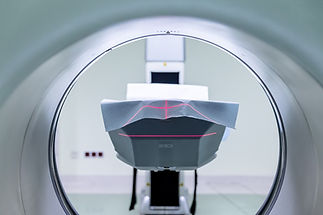
MRI
Breast MRI uses magnets and a safe contrast dye to create detailed pictures of your breast tissue. It’s often recommended for women at higher risk or when other tests need extra information. See below to learn how MRI works and when it might be right for you.
Molecular Resonance Imaging (MRI)
What is it?
A breast Magnetic Resonance Imaging (MRI) uses magnets and radio waves to create detailed pictures of your breast tissue. It helps doctors find areas that may not be visible on a mammogram or ultrasound.
How Does it Work?
A special dye called a contrast agent is given through an IV. This dye helps highlight areas in your breast that might need closer attention, like changes in blood flow or leaky blood vessels that can be linked to cancer.
Best for:
-
Women who have a higher risk of breast cancer.
-
Women with dense breast tissue.
-
When a mammogram or ultrasound needs further follow-up.
-
Women who have had a mastectomy
Important to Know:
-
MRI is very sensitive and can detect areas that might not be visible on other imaging tests.
-
It is more expensive and is less accessible than other tests.
-
Insurance coverage for supplemental screening can vary widely based on your state’s legislation and your specific insurance plan.
What to Expect:
-
Before the Scan: You’ll change into a gown and may need an IV for the contrast dye. Let your doctor know if you’re nervous about IVs or have any allergies.
-
During the Scan: You’ll lie face down on a padded table. The table slides into a machine that looks like a tunnel.
-
Noise: The machine makes loud tapping or thumping noises, but you’ll be offered earplugs or headphones.
-
Duration: The test takes about 30 to 45 minutes. You’ll need to stay still for clear images.
-
After the Scan: You can go back to your normal activities unless instructed otherwise.

